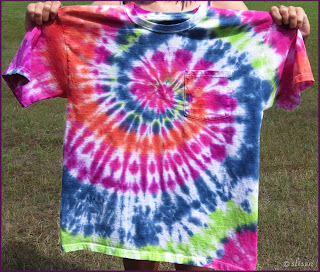 |
| (Click on photos to enlarge) |
slisen.blogspot.com
I’ve been machine knitting for many years but I've
never made a pair of felted mittens.
I’ve
been wondering what I could make with some worsted wool that I’ve had on hand
for awhile, so guess it’s about time for some felted mittens. They’re based on my favorite mitten pattern with size
adjusted to compensate for the felting. They feature a thumb gusset for better fit and a shortrowed fingertip.
One 4 oz skein will make the size in this
pattern.
But they’ll take a bit more yarn if
you need a bigger size or want longer wrists and cuffs.
To save on main color yarn, a contrasting
color could be used for stripes or a contrasting cuff/wrist.
These are a basic mitten but could be
dressed up with colorful yarns, fairisle or embellished with embroidery, needle
felting, adding a braid or woven ribbon, line with a pretty fabric, etc.
Another nice option would be to knit a ribbed cuff in non-felting yarn and sew it to the inside of the mitten wrist. Use your imagination.
The 2nd pair was made with 2 strands of Sweet Feet by Interlacements Yarns, a non-superwash variegated sock yarn, with a gauge of 5 sts and 6 rows per inch. (3.7 oz)
Felted Mitten
Size:
Woman’s Medium
Machine:
KX-350 midgauge
Yarn:
Aussi
Wool Worsted Weight, 4 oz
Gauge:
Pre-Felt 4 sts, 5.5 rows = 1”
CUFF:
1)
CO 42
sts with waste yarn, knit 6 rows with waste yarn and knit 1 row with ravel cord.
2)
With
main yarn, e-wrap each needle by pulling the e-wrap thru the stitch created
by the ravel cord already on the needle.
3)
RC000,
T6, K6R.
4)
Hand manipulate
2x1 latched rib, beginning
with
the 2
nd stitch.
WRIST:
1)
RC000,
T7,
K16R (or desired length).
THUMB GUSSET:
1)
RC000,
T8, with 2 prong transfer tool, increase 9 sts on each side by increasing 1 st
on beginning of every row 18
times.
Fill in the empty needle with the
heel of the previous stitch from the main body.
(The last inc will be on RC017, then K across to RC018, with COR).
2)
Opposite
the carriage, scrap off 8 sts with several rows of waste yarn.
3)
K1R, opposite
the carriage, scrap off 8 sts with several rows of waste yarn.
HAND:
1)
RC000, T8,
K26R on remaining 44 sts.
2)
Put
machine on hold and half the stitches opposite the carriage into hold position.
3)
Shortrow on working needles down to 8 sts and back out.
(Use a simple shortrow, do not wrap needle on the increases).
4)
Cut
yarn leaving a tail to be used for seaming.
5)
Scrap
off both sections with several rows of waste yarn.
THUMB:
1)
With
wrong side facing and thumbs in the middle of work, hang a total of 18 stitches
with the 8 sts from
the left thumb section, 1 stitch from that edge of the mitten body, 1 stitch
from the edge of the
right
hand mitten body and 8 sts from the right thumb section.
2)
RC000,
K2R.
3) With 2 prong transfer tool, dec 1 st on each edge.
4) K12R even.
5)
With 1
prong transfer tool, transfer EOS to its neighbor to the right and move
stitches together.
6)
K2R.
7)
Dec EOS
as above, move stitches together.
8)
K1R and
gather.
FINISHING:
1)
Loosely
graft the fingertip seam from the purl side.
2)
From
the public side, loosely sew all seams with Bickford style stitching.
3)
Felt to
size desired.
(Mine took 3 cycles of
hot/cold).
NOTES:
1)
Use no
knots in felted objects.
Knots will result
in lumps that you don’t want.
Simply
weave the
yarn ends in as you normally would.
The felting process ensures that the yarn
ends will not loosen and
disengage.
2)
During
felting, the fabric will shrink up more in length than width.
3)
Before
starting the felting, I place plastic bags inside the mitten and pin in place
with small safety
pins
so the layers won’t felt together.
After
each wash/rinse cycle, I examine and reposition the safety
pins if they’ve gotten dislodged and hidden in the fabric.
My felting for these mittens took
3
cycles of hot/cold wash/rinse and after the 2
nd cycle, I removed the
safety pins and plastic bags.
4)
All
wool is not created equal and the felting process may vary with water temperatures
and length
of washing
cycles.
So check your felting periodically….there’s
no turning back if they get too small.
AFTERTHOUGHT NOTES:
1) After making several of these mittens, I found that with some yarns the thumb base was a bit tight and needed some stretching while drying. So I've reworked the instructions for the thumb gusset by adding 2 stitches. Then when knitting the thumb, I knit 2 rows and then decreased 2 stitches, then knit the rest of the thumb as in my original pattern. It works out well.
2) I found it totally unnecessary to place a plastic bag inside the mitten while felting. The sides do not felt together as I would have suspected. But you can add the plastic if you're worried that they will.



















































